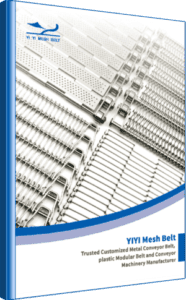Surface Treatment
Surface treatment
Surface treatment for conveyor belt include pickling and Electrolytic polishing. Each method offers unique benefits and drawbacks, and the choice of treatment will depend on factors such as the type of metal used in the wire mesh and the environmental conditions it will be exposed to.
Pickling




Advantages of Pickling
Removal of surface impurities
Removal of surface impurities
Enhanced adhesion
Cost-effective
Environmentally friendly
This is a chemical treatment method that involves immersing the metal conveyor belt in an acidic solution, typically hydrochloric acid or sulfuric acid. The acid dissolves any impurities, oxides, or scale on the surface of the metal, leaving behind a clean and smooth surface. Pickling is often used to prepare the metal surface for subsequent coating or plating processes.
Electrolytic polishing




Advantages of Electrolytic polishing
Provides smooth and shiny surface finish
Used to remove surface defects
Used on a variety of metals
Improve the corrosion resistance
Achieve a specific surface finish
This is an electrochemical treatment method that uses an electric current to dissolve and remove the top layer of the metal surface, resulting in a smoother and more reflective finish. The metal conveyor belt is immersed in an electrolyte solution and connected to a positive electrode (anode). A negative electrode (cathode) is also placed in the solution. When an electric current is passed through the solution, metal ions are attracted to the cathode, and the surface of the metal conveyor belt is polished by the action of the electrolyte. Electrolytic polishing can be used to improve the appearance and corrosion resistance of metal surfaces.

